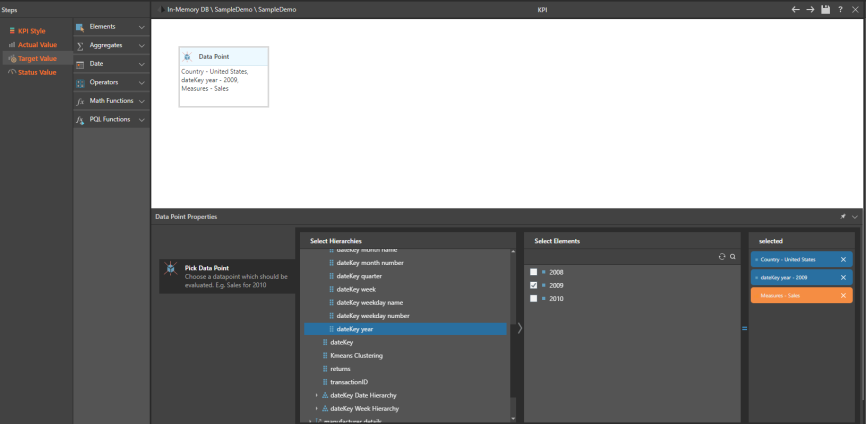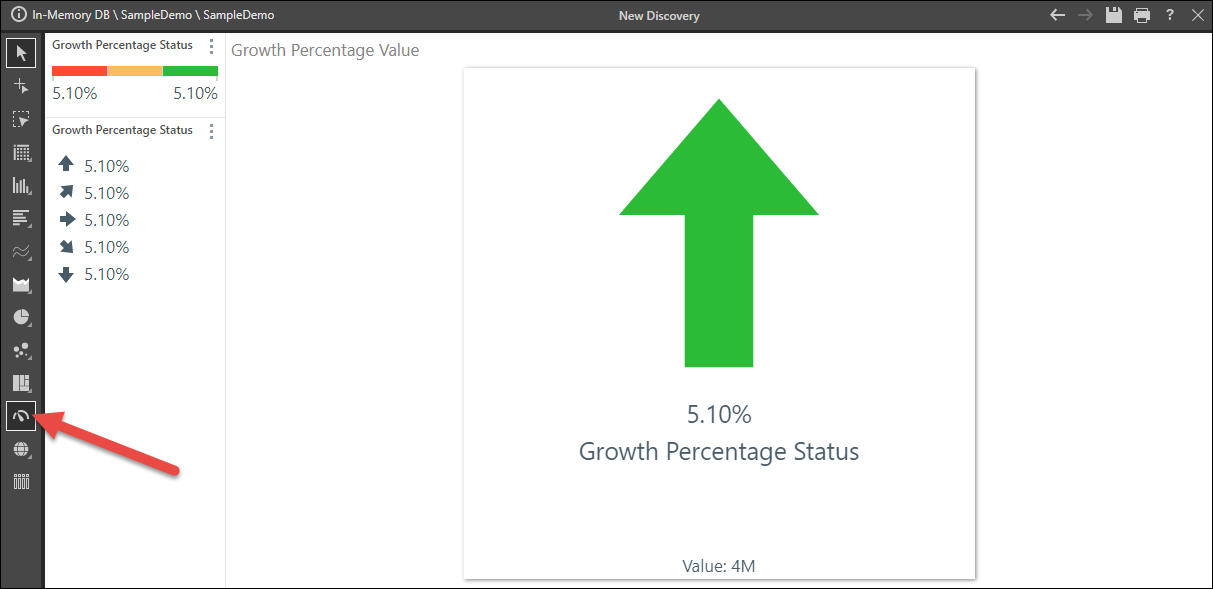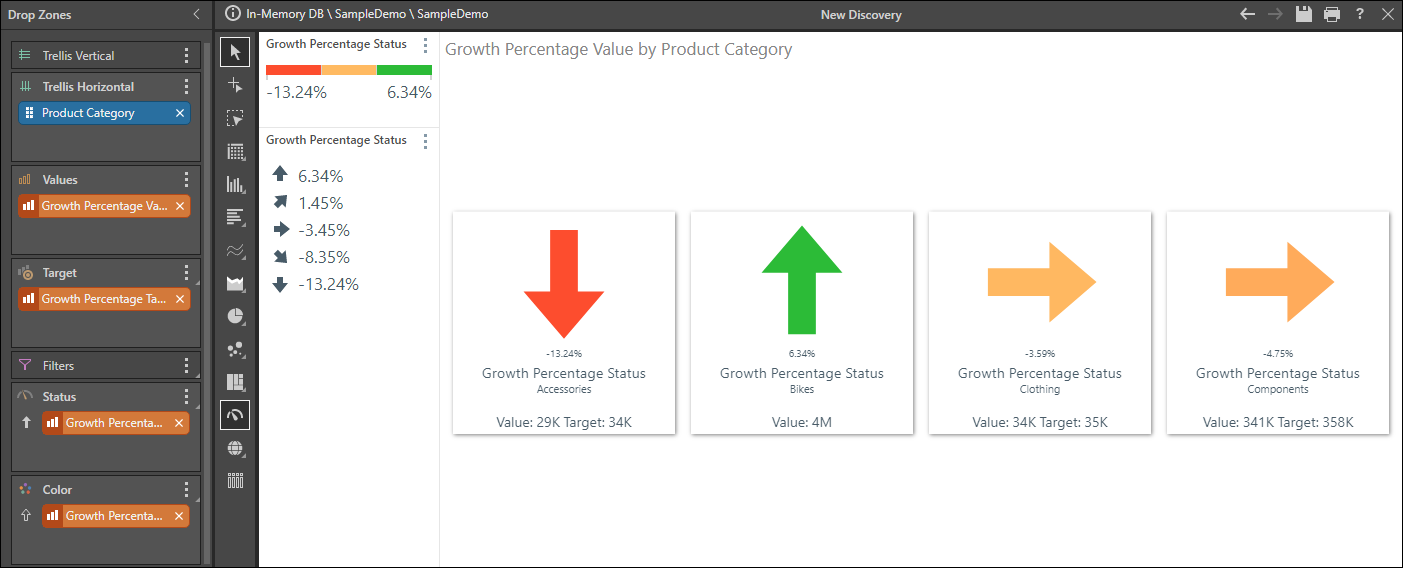The following walkthroughs demonstrate how to build a KPI and then how to use the KPIs in Discover.
See how to create a growth percentage KPI in the steps below.
STEP 1
Select one of the visual styles from the Style page and click next. For this example, select Reverse Signs.
When using arrow indicators, select Signs if you want the status value to be lower than the target value (for example, if your status value is returns, and the target it sales, then a low status value would indicate success).
If you want the status value to be higher than the target value, then use Reversed Signs (for example, if you want a status value of Sales to exceed a target value of Costs)

STEP 2
Define the actual value. This is the value you intend to measure. This may be a data point, member or set, or you can use the other available functions to define a more complex value.

STEP 3
Specify a target value. This is the your goal that you want to measure your actual value against. Your target value can be a static predefined KPI, or it can be a dynamic value or calculation. For instance, in this example the target value is US sales for the previous year.

STEP 4
Add a status value. The status value is the calculation you want to apply to your actual and target values, to determine how the actual will be compared with the target. You can define your own calculation, or use the templates.
Click  to test your calculation, and then save.
to test your calculation, and then save.

STEP 5
Enable custom dynamic bands if required. For information about dynamic bands, click here.
Once you've saved your KPI, you can add it to queries in Discover.
STEP 1
Under Measures, click  to show business logic. The folder tree will appear in the lower window.
to show business logic. The folder tree will appear in the lower window.

STEP 2
Find the KPI in its folder location, and select it to add it to the query. Each of the KPIs values (actual, target, and status) will be added to the drop zones.

STEP 3
Select the required visualization; here, a the KPI is visualized as a gauge.

STEP 5
Continue adding to the query as required.
As usual, select the required visualization, including gauges. To learn about gauges click here.

Other Options
- Select KPI values: you can select only specific values from your KPI. For instance, select the Status to see only the status indicator without numeric values.
- Status indicator: move the Status chip over the Indicator icon to see additional indicator options. You can drop the chip onto a different indicator style or indicator logic.
- Drop zones: you can move the KPI chips between the drop zones to see your information differently. For example, move the Values chip from Tooltip to Columns, to see the target value in the grid.
- Color zone: move the Color chip into the Color sub-menus to change the color indicators and color logic.
Conditional Formatting Dialog: use the advanced dialog to fully customize the KPI banding. Click here to learn more.